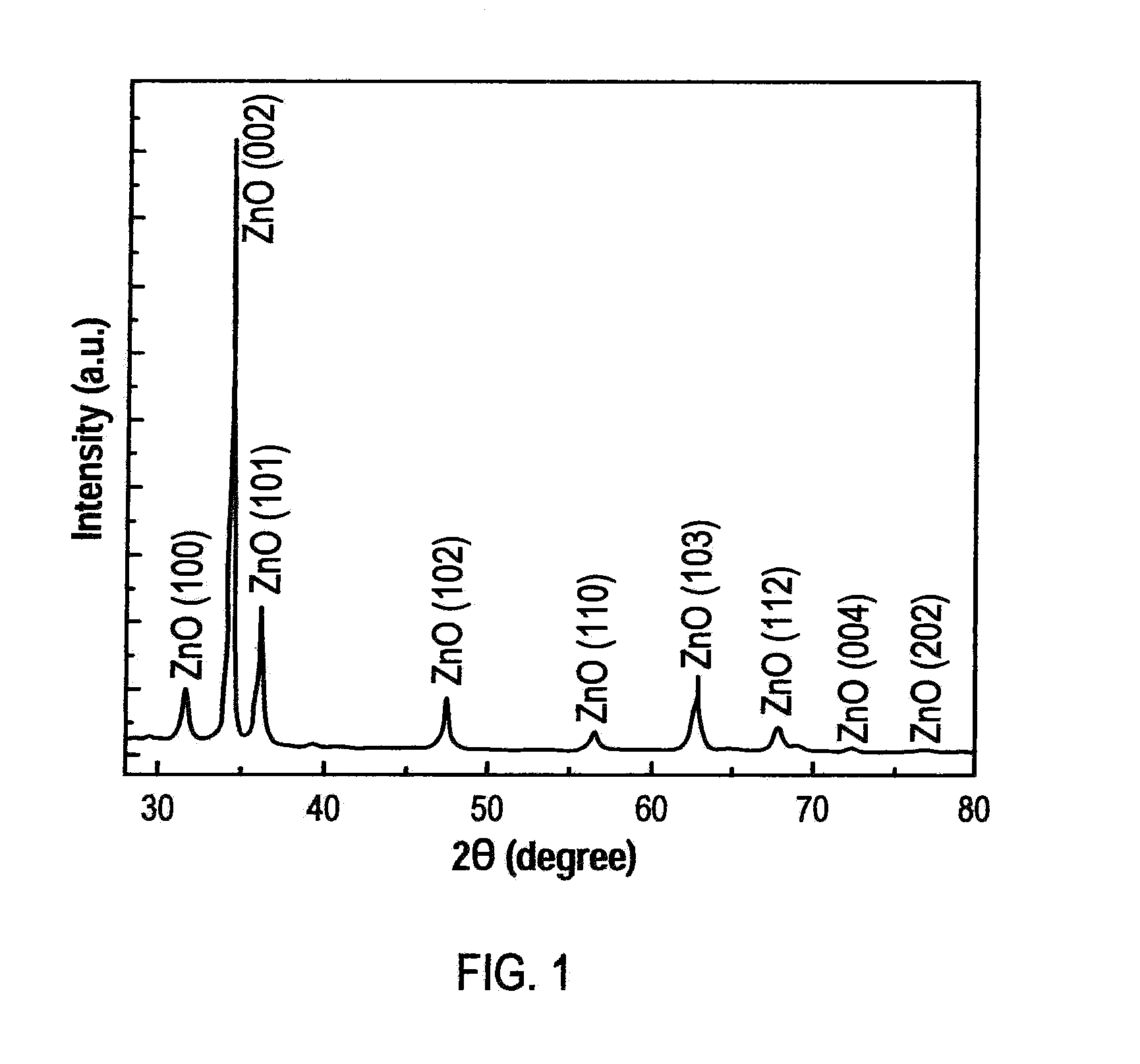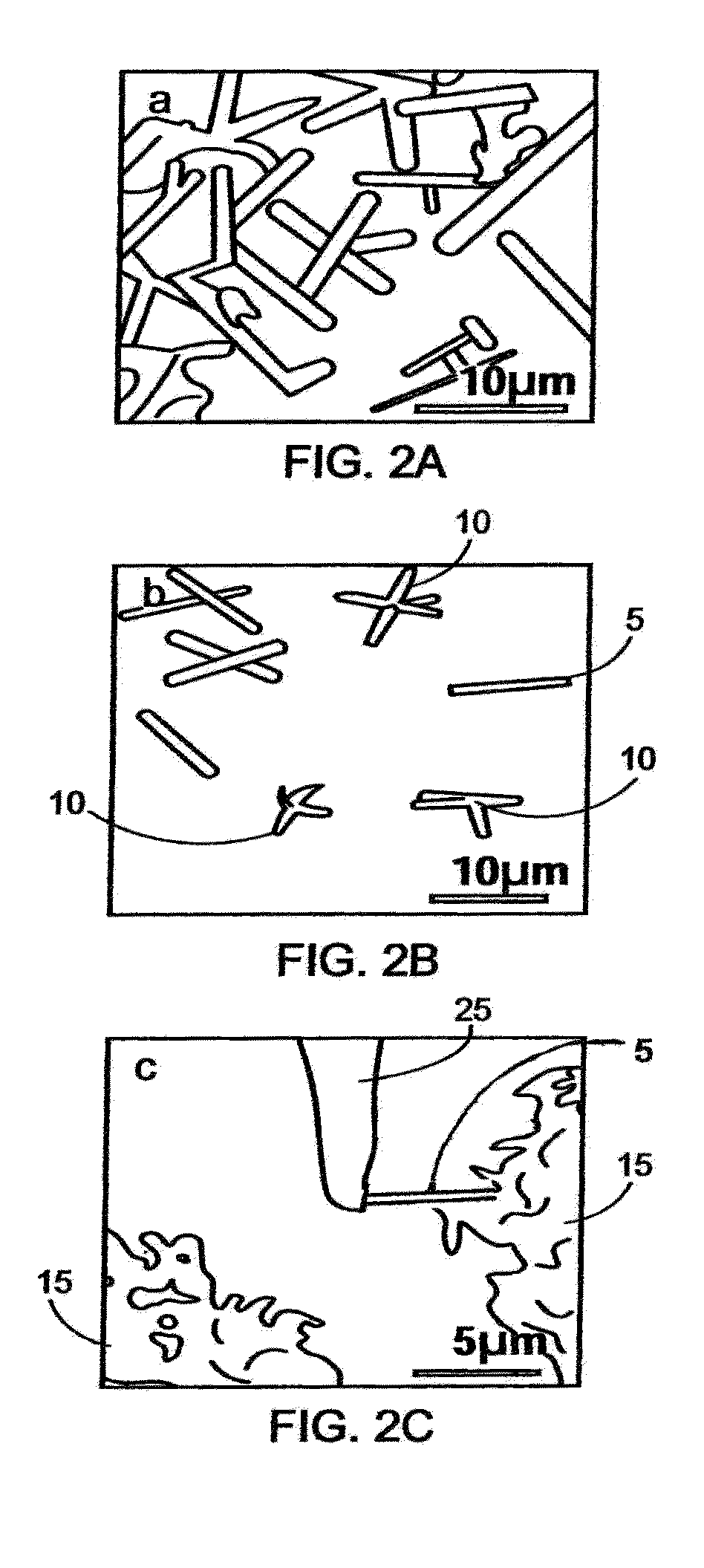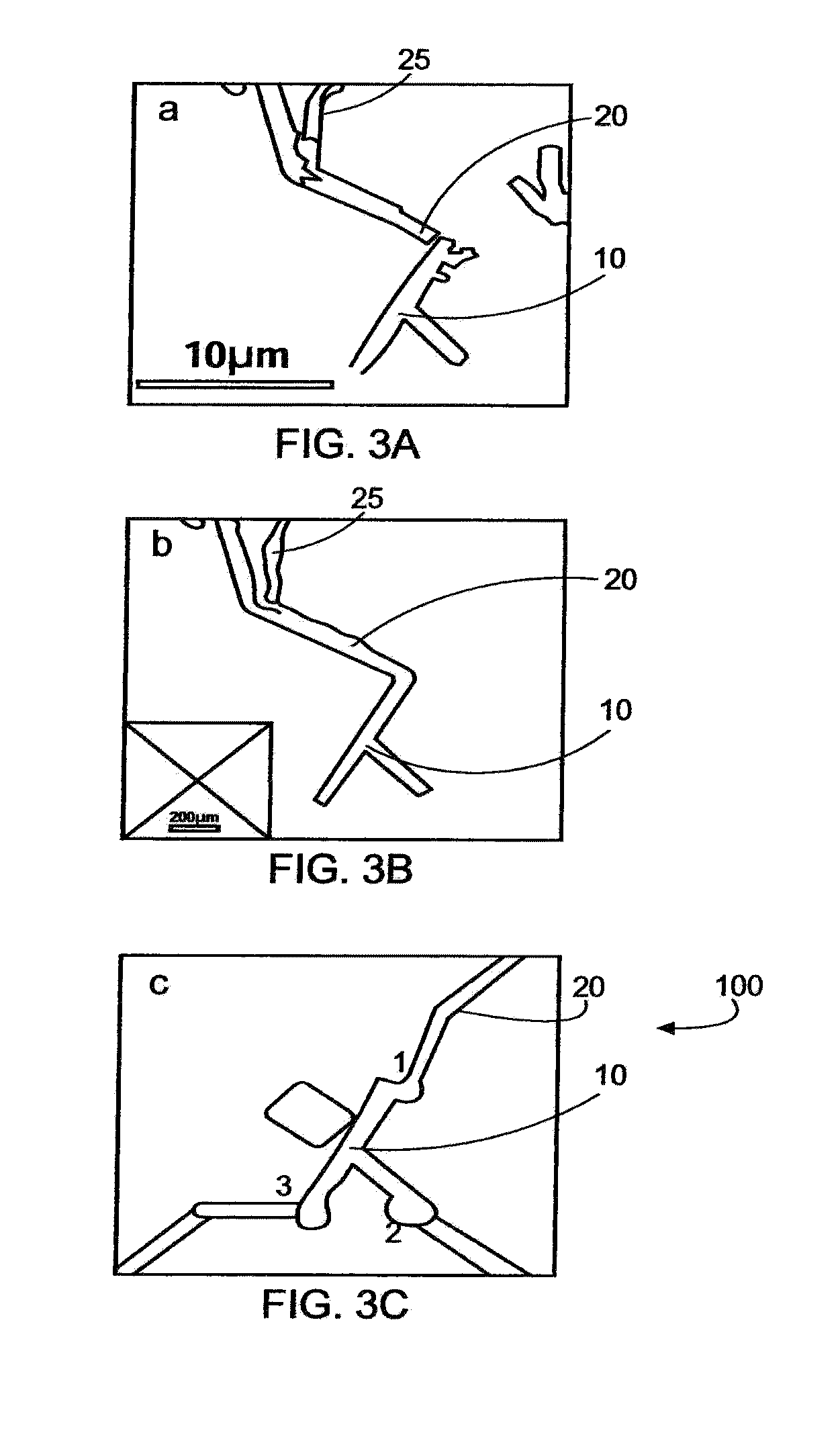Fabrication of ZnO nanorod-based hydrogen gas nanosensor
a technology of hydrogen gas nanosensors and nanorods, which is applied in the field of hydrogen sensors, can solve the problems of high complexity, high odor, and hazardous gas, and achieve the effect of increasing the sensitivity of zinc oxide nanorod-based nanosensors
- Summary
- Abstract
- Description
- Claims
- Application Information
AI Technical Summary
Benefits of technology
Problems solved by technology
Method used
Image
Examples
example 1
Nanofabrication of Sensors by In-Situ Lift-Out Technique
[0066]In the following section, the in-situ lift-out technique is described. The Si / SiO2 wafers were used as intermediate substrate for ZnO tripods transferring and distribution in order to avoid charging problems in the FIB system. For the nanosensor preparation, the glass substrate was used and aluminum (Al) electrodes were deposited as templates with external electrodes / connections.
[0067]Usually a microscope and a micromanipulator for the ex-situ lift-out technique have been used to separate individual ZnO nanorods in order to be easily attached to the in-situ FIB needle. A magnification of ×100 was used to separate ZnO nanorods transferred to intermediate Si / SiO2 substrate and to distribute them on the surface for an easy pick-up. A magnification of ×6500 was used to position a needle 25 on the ion optic axis and to lift the single ZnO branched nanorod-tripod away from the Si / SiO2 substrate.
[0068]A micromanipulator mounted ...
example 2
In-Situ Lift-Out Procedure
[0075]The fabrication of a single ZnO nanorod hydrogen sensor using focused ion beam / scanning electron microscopy (FIB / SEM) in-situ lift-out technique is described below. The fabricated nanosensor can detect parts per million (ppm) level of hydrogen concentration at room temperature. The sensing material is single ZnO nanorod 30 which has been grown using a bio-safe aqueous solution method.
[0076]First, a microscope and a micromanipulator are used for the ex-situ lift-out technique and also used to separate individual ZnO nanorods in order to be easily attached to the in-situ FIB needle 25. A ×100 magnification was used to locate ZnO nanorods on the intermediate Si / SiO2 substrate. A magnification of ×7000 was use to lift the single ZnO nanorod.
[0077]Then, a Keindiek Micromanipulator in the FIB / SEM system permits movements of a few nanometers along the x and y directions and 1 nm movements in the z direction. The Micromanipulator was mounted beside the stage....
example 3
Gas Sensing Properties
[0087]For gas sensing characterizations, the fabricated single ZnO branched nanorod sensor was placed in a 1000 cm3 gas chamber and investigated sensitivity to H2 and also O2, CH4, CO, CO2 and LPG gases at room temperature in the concentrations up to 2000 ppm. The readings were taken after the gases have been introduced in the test chamber. It was found that resistance change |ΔR|=|Rgas−Rair| increased linearly with H2 gas concentration and is constant for other gases at room temperature. The room temperature sensitivity of the self-assembled ZnO branched nanorod at 150 ppm H2 is shown in FIGS. 10A, 10B and 10C for three different tripod connections. Sensitivity to hydrogen between branches 1 and 2 is shown in FIG. 10A; room temperature sensitivity to hydrogen between branches 1 and 3 is shown in FIG. 10B; and room temperature sensitivity to hydrogen between branches 2 and 3 is shown in FIG. 10C.
[0088]The relative resistivity changes after 50-80 s H2 exposure b...
PUM
| Property | Measurement | Unit |
|---|---|---|
| accelerating voltage | aaaaa | aaaaa |
| length | aaaaa | aaaaa |
| length | aaaaa | aaaaa |
Abstract
Description
Claims
Application Information
 Login to View More
Login to View More - R&D
- Intellectual Property
- Life Sciences
- Materials
- Tech Scout
- Unparalleled Data Quality
- Higher Quality Content
- 60% Fewer Hallucinations
Browse by: Latest US Patents, China's latest patents, Technical Efficacy Thesaurus, Application Domain, Technology Topic, Popular Technical Reports.
© 2025 PatSnap. All rights reserved.Legal|Privacy policy|Modern Slavery Act Transparency Statement|Sitemap|About US| Contact US: help@patsnap.com



